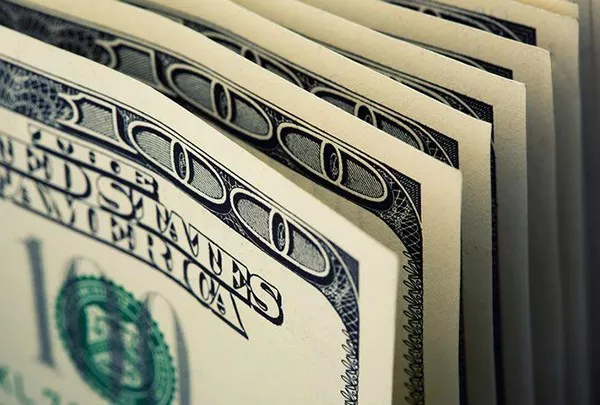In a world dominated by electronic transactions and digital currency, the allure of physical money has not diminished. While most currency enthusiasts focus on rare coins or older banknotes, there is a special charm associated with the humble $2 bill. The 1995 $2 bill is a prime example of this fascination. While many might be curious about its worth, determining the value of a 1995 $2 bill is a nuanced process. In this article, we will explore the factors that influence the value of this particular banknote, giving collectors and curious individuals a better understanding of its worth.
Historical Context
The $2 bill has a unique place in American currency. It was first introduced in the early 1860s, and the design of the bill has undergone several changes over the years. In 1995, the United States Bureau of Engraving and Printing released a new series of $2 bills, often referred to as the “1995 $2 bill.” These bills featured a modernized design, highlighting a more vibrant and intricate appearance compared to their predecessors.
Factors Influencing Value
Condition: As with any collectible item, the condition of the 1995 $2 bill plays a significant role in determining its value. A well-preserved bill with minimal signs of wear, creases, or discoloration is naturally more valuable than one in poor condition. Collectors often use a grading scale, with “Crisp Uncirculated” being the highest grade, to assess a bill’s condition.
Serial Number: Some collectors are particularly interested in bills with unique or low serial numbers. Bills with low serial numbers, especially those with a series of repeating numbers (e.g., 00000001), are considered more valuable due to their rarity.
Errors and Variations: Bills with printing errors or unusual variations often command higher prices in the collector’s market. A bill with a misprint or a printing error, such as an inverted image or an off-center design, can be highly sought after by collectors.
Signatures: The signatures of the Treasury Secretary and the Treasurer of the United States on the bill can also affect its value. Bills with signatures of notable individuals or combinations that are relatively rare may be more valuable.
Seal Color: The color of the seal on the bill can also impact its worth. While most 1995 $2 bills have a green seal, some may have seals that appear more yellow due to differences in the ink used during the printing process. These variations can be of interest to collectors.
Rarity: The rarity of a 1995 $2 bill can significantly influence its value. Bills that were printed in smaller quantities, were part of limited runs, or had specific regional distributions may be considered rarer and, therefore, more valuable.
Market Value
The market for collectible currency is a dynamic one, with values influenced by supply and demand, as well as the perception of rarity and desirability among collectors. While the intrinsic value of a $2 bill is, of course, two dollars, collectors and enthusiasts are willing to pay more for bills with unique features or qualities.
For a typical 1995 $2 bill in good condition and without any particularly rare attributes, the value may be slightly above face value. Bills in “Crisp Uncirculated” condition might be worth a few dollars more, but it’s essential to note that these are not generally considered high-value items in the world of currency collecting.
However, if you are fortunate enough to possess a 1995 $2 bill with rare attributes, such as a low or unique serial number, a printing error, or a signature combination of historical significance, the value can increase significantly. Some particularly rare and highly sought-after 1995 $2 bills can command prices well above their face value.
Collecting and Investing
Collecting 1995 $2 bills can be a fascinating and enjoyable hobby. Many collectors are drawn to these bills due to their historical significance and unique designs. If you’re interested in collecting these bills, here are a few tips to keep in mind:
Educate Yourself: Learn about the different attributes that can affect the value of a 1995 $2 bill, such as condition, serial numbers, printing errors, and signature combinations. The more you know, the better equipped you’ll be to identify valuable bills.
Network with Other Collectors: Joining collector forums, attending currency shows, or participating in local collector groups can be a great way to learn from experienced collectors and discover new opportunities to acquire bills.
Handle with Care: If you’re hoping to preserve the value of your bills, be sure to store them in a way that prevents damage. Many collectors use protective sleeves or holders to keep their bills in pristine condition.
Be Patient: Finding a 1995 $2 bill with unique attributes or in exceptional condition may take time. Patience is a virtue in the world of currency collecting.
Conclusion
The value of a 1995 $2 bill is not solely determined by its face value but rather by a combination of factors, including its condition, rarity, and any unique attributes it possesses. While most 1995 $2 bills are not considered high-value collectibles, those with distinctive features or historical significance can command a premium among collectors. Whether you’re a seasoned currency enthusiast or just someone curious about the worth of a 1995 $2 bill in your possession, understanding the factors that influence its value can provide a deeper appreciation of the world of currency collecting. So, the next time you come across a 1995 $2 bill, take a closer look – you might just be holding a piece of history with hidden value.


